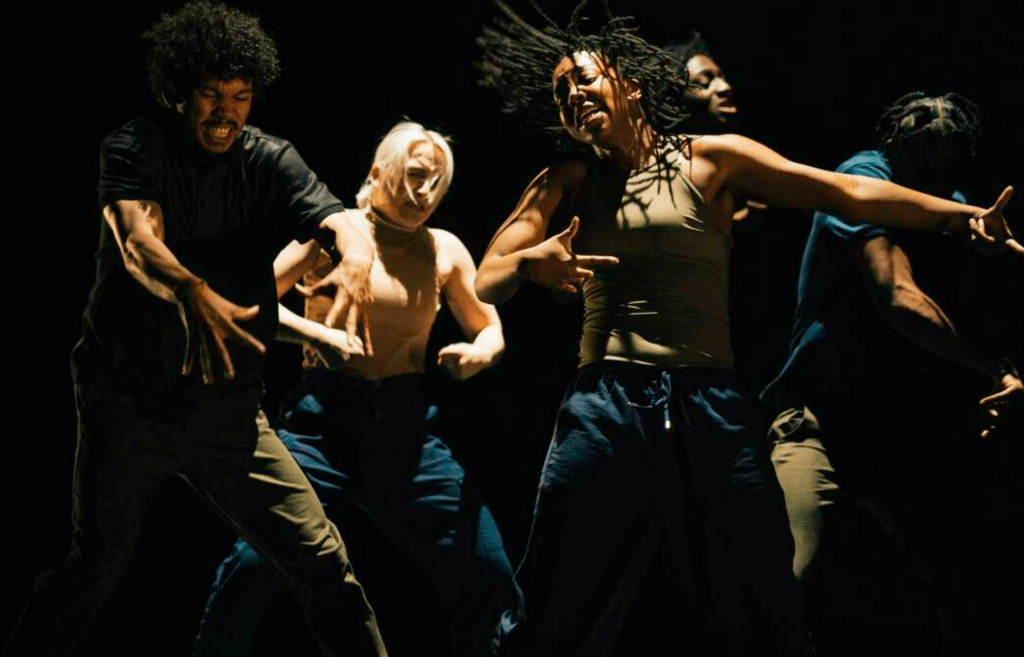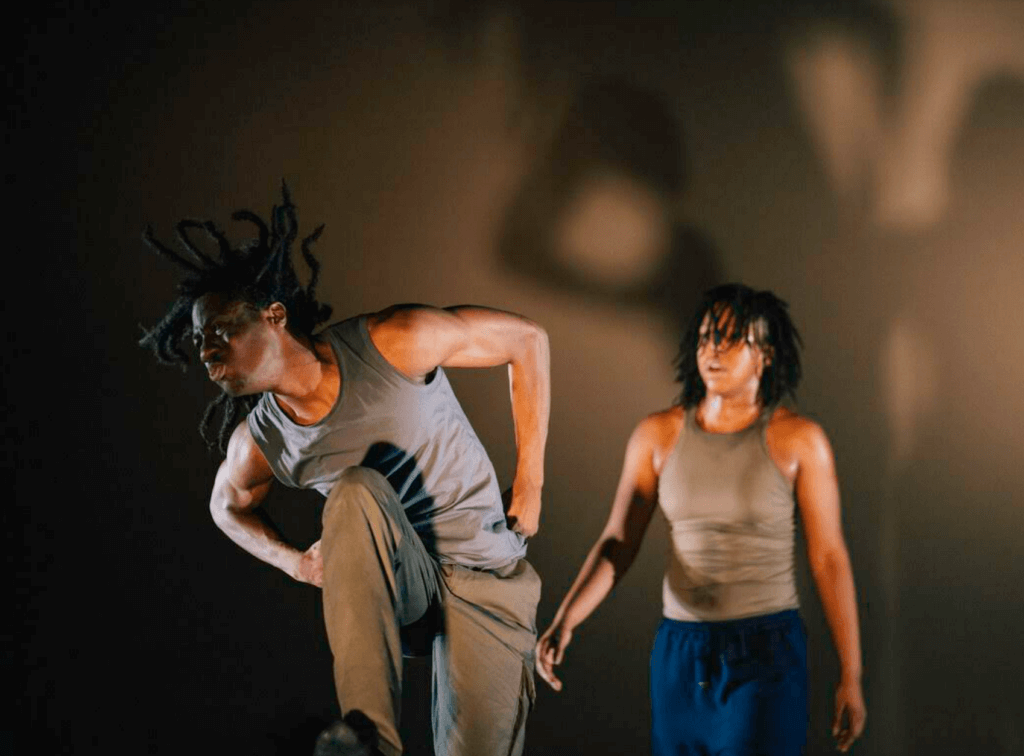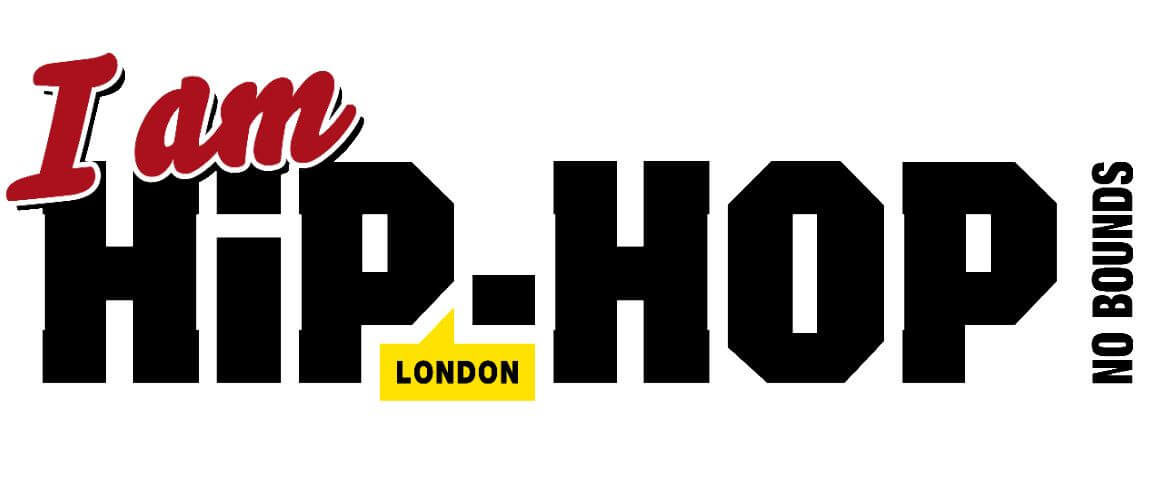
Photo Credit: Elliott Banks
Captivating, relentless, and energising throughout, Just Us Apprenticeship Company delivers an awe-inspiring performance at The Place.
Curated by Joseph Toonga, the artistic director of Just Us Dance Theatre, the evening bill showcases works from renowned choreographers Bruno Duarte, Kloe Dean, and Simeon Campbell, alongside an excerpt from the company’s repertoire.
Each piece is a testament to the versatility and emotional depth of hip hop dance theatre, but the stars are the five female members of the apprenticeship company — Ceara Batson, Shania Barret-McGrath, Jada Nichols, Annija Raibekaze, and Princess Van-Der-Larbi.
We first see their brilliance in Duarte’s Rito, a piece drawing from the choreographer’s unique Krump style and the Capoeira martial art. The piece starts loud and lively. Emulating the raw nature of Krump cyphers, the dancers bound around the stage in a cluster, with arm throws, buck hops, and capoeira kicks breaking through moments of intricate movement. The thumping, base heavy music composed by Duarte underscores these moments, where one dancer introduces a groove for the others to match in call and response.
There’s an especially incredible recurring motif that draws audible reactions from the audience. The dancers continuously perform kick ups (also known as nip ups) that fall back into the ground, creating a rippling full body wave that repeats over and over; in odd patterns, in sync, and in canon at different parts of the work. It’s an impressive and physical feat.
Next in the bill is the excerpt of Toonga’s Born To Protest, which picks up where Duarte left off. The party vibe continues to an infectious beat composed by Michal ‘Mikey J’ Ansate, and the dancers draw us in with afro dance grooves, playful facial expressions, and dizzying house steps (I’ve never seen a simple farmer step cover so much ground!). But soon, the cast are abruptly interrupted by a harsh light upstage left beaming from a low angle across the stage. The music cuts off and the dancers sharply raise their hands up as if held at gunpoint. The pin drops.
What follows is a series of Toonga’s unique Krump and contemporary vocabulary done in silence, punctuating the frustration felt with breath and voice shouting “can’t you see us?”. By creating a false sense of security and stripping it away at a given notice, it can be read as Toonga directing our attention to the lived experience of those living under an oppressive state. That to live and experience joy in community can be unjustly reprimanded by a policing state.
Yet through the struggle (Nichols at one point is wrestled by the others as she attempts to break from restraint), the cast build themselves up by galvanising energy (and using a raised fist motif) to protest the injustice. There is an issue of length as the same monologue is repeated by Nichols and Batson to identical effect, but the cast ultimately navigates the emotive shift of the work with skill. I’m especially in awe of their collective ability to dance to exhaustion and use that fatigue as a tool to represent the tiring fight against injustice.

Photo Credit: Elliott Banks
Simeon Campbell’s Vice came next after an interval, telling a loose narrative around one person’s experience of addiction. The original choreography was created for Birdgang dance company and centred a male character. In this instance, Barret-McGrath takes on the lead role. In the post-show Q&A, she describes this piece as a particular challenge in its dramatic narrative approach, requiring acting skills in showing nuanced emotions non-verbally throughout.
Yet Barret-McGrath’s portrayal is faultless. From the literal gestures of drug use to alcohol abuse, she does well to execute the choreography she’s given. A movement section done on a chair and desk is particularly memorable with a dazed expression and darting eyes showing confusion. She hits musical cues with placed isolations, pops, and tuts, before an intricate wave beats through her whole body.
Last in the lineup is Process by Kloe Dean, which shifts the singular focus back to the collective. It’s refreshing to see how the dancers adapt to and reflect each choreographer’s distinct style, and it’s no different in Dean’s case. Those familiar with her grooves, intricate footwork, and dynamic moving formations would feel at home watching this work.
Josh Tomalin’s lighting does wonders too. A standout moment being a rectangular beam downstage leaving the rest of the stage pitch black. The dancers fall into the light one after the other and quickly dart back into the dark, creating a simple yet mesmerising effect. I’m especially drawn to Raibekaze’s punctuated pops into seamless flows, and Van-Der-Labi’s fluid movements that breathe an ease into the work and evening’s overall hard and hype energy.
The level of physicality and skill on display by these emerging talents cannot be understanded. As a company of only 12 weeks, they showcase an unquestionable ability, identity, and voice as a collective. We’re even treated to their wisdom in the Q&A: to push beyond comfort zones, reimagine our limits, and dare to dream the impossible.
Joseph Toonga’s programme underscores Just Us Dance Theatre’s commitment to nurturing young talent and pushing the boundaries of hip hop dance theatre. And the result is an evening of articulate, fiery, and energetic dance, promising a bright future for the UK’s hip hop dance theatre scene.
A Night of Hip Hop Theatre with Just Us Apprenticeship Company continues its tour to Connaught Theatre, Worthing on May 21.
